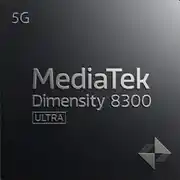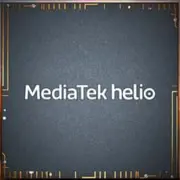SoC Comparison Result
MediaTek Dimensity 8300 Ultra vs MediaTek Helio G100
MediaTek Dimensity 8300 Ultra and MediaTek Helio G100 belong to different classes. The first one is a sub-flagship with 5G, the second one is an affordable 4G platform for budget smartphones. Below is a comparison of the key points without extra theory.
Processor and architecture
Dimensity 8300 Ultra is based on a 4 nm process and Armv9 architecture. It has eight cores - four performance cores and four efficiency cores - which provide a high level of multithreaded performance and a speed reserve for several years. In real use this is noticeable when you quickly switch apps, work with heavy browser tabs and keep system services running in the background.
Helio G100 is manufactured on a 6 nm process and uses an older core combination - several Cortex A76 and efficiency cores Cortex A55. In typical scenarios like messengers and a browser it behaves normally, but under heavy multitasking and large apps the gap to Dimensity 8300 Ultra becomes noticeable. Under load the system more often pauses a bit when switching between programs.
Graphics and gaming
First about Helio G100. It uses a Mali G57 GPU with two clusters. This is enough for popular games at medium settings in Full HD. Light and medium projects run stably, but in heavy games you have to reduce graphics quality and accept longer loading times for resources.
Dimensity 8300 Ultra comes with a Mali G615 GPU with six clusters. This GPU is designed for high settings in modern games and more stable FPS. In practice demanding projects start faster and keep smooth visuals longer, even when the system is active in the background. The graphics margin is much higher, so new games and updates are handled more easily by this chip.
System speed and connectivity
Here Dimensity 8300 Ultra gets several advantages at once.
It supports LPDDR5X RAM and UFS 4.0 storage. This speeds up OS startup, loading of heavy apps and game installation. Subjectively the interface feels "lighter": you see fewer stutters when you quickly jump between apps and tabs.
Helio G100 works with LPDDR4X and UFS 2.2. For the budget and mid-range segment this is enough, but in a direct comparison a smartphone with Helio takes clearly longer to open heavy games and large apps, and under high load short delays sometimes appear.
The gap is even stronger in connectivity. Dimensity 8300 Ultra is a 5G platform with support for current bands, fast carrier aggregation, Wi-Fi 6E and modern Bluetooth. In networks with good 5G coverage the time needed to download large content and updates is noticeably reduced.
Helio G100 is strictly 4G LTE, plus Wi-Fi is limited to Wi-Fi 5 level. For the typical "mobile internet plus home router" scenario this is enough, but the platform almost does not scale for the future: no 5G and no new Wi-Fi standards.
Cameras and AI
Dimensity 8300 Ultra supports image sensors with very high resolution, advanced multi-frame HDR and video recording up to 4K at 60 frames per second. A dedicated AI unit accelerates photo and video processing: night shots, portraits, sharpness enhancement and noise reduction. Some functions can run on the device without cloud access, which is useful for offline scenarios.
Helio G100 is also designed for high megapixel cameras, but usually stays with simpler modes - recording up to 2K or Full HD and standard image enhancement algorithms. For everyday photos and videos this is enough, but the potential is lower, and manufacturers less often implement complex AI camera features on this platform.
Power efficiency and battery life
Thanks to the 4 nm process and the new architecture, Dimensity 8300 Ultra shows a good balance between performance and power consumption. In smartphones with a medium capacity battery it can provide a full day of active use even with periodic gaming and camera work.
Helio G100 is not a high drain chip, but its potential is simpler: to keep comfortable battery life, manufacturers usually focus on moderate frequencies and less demanding scenarios. With the same battery capacity a model with Helio will be closer to a "calm usage" format, while with Dimensity 8300 Ultra you can afford more heavy tasks without a sharp drop in battery time.
Conclusion
Dimensity 8300 Ultra is a choice for smartphones aimed at high performance, 5G, fast system response, advanced cameras and modern AI features. It is a base for sub-flagships and the upper mid-range segment.
Helio G100 is a platform for affordable 4G devices where the main goal is adequate speed in everyday tasks and a decent camera at a low price. For messengers, social networks, simple games and basic shooting its capabilities are enough, but in a direct comparison on the main parameters Dimensity 8300 Ultra is clearly ahead.
Advantages
- Higher Technology: 4 nm (4 nm vs 6 nm)
- Higher Frequency: 3350 MHz (3350 MHz vs 2200 MHz)
- Newer Launch Date: August 2024 (November 2023 vs August 2024)
Basic
6x 2 GHz – Cortex-A55
GPU Specifications
Connectivity
Memory Specifications
Miscellaneous
Benchmarks
Related SoC Comparisons
Share in social media
Or Link To Us
<a href="https://cputronic.com/soc/compare/mediatek-dimensity-8300-ultra-vs-mediatek-helio-g100" target="_blank">MediaTek Dimensity 8300 Ultra vs MediaTek Helio G100</a>






